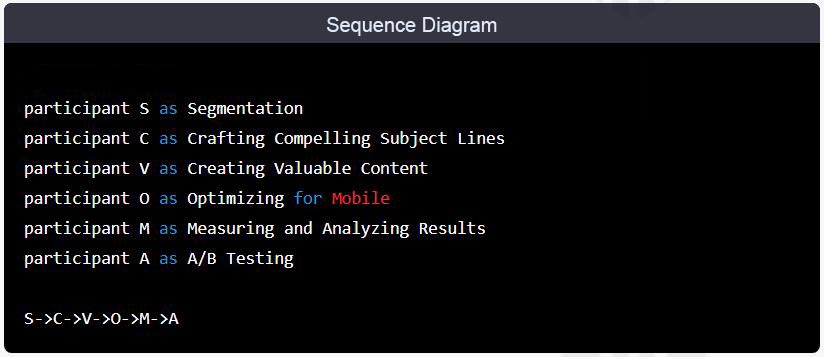Email marketing’s one of the most cost-effective ways for small businesses to reach and engage their target audience. With the right strategy and tools, you can drive more traffic to your website, increase brand awareness, and boost conversions. In this comprehensive guide, we’ll share with you the best tips and tricks for small business email marketing success.
The Importance of Segmentation in Email Marketing
Segmenting your email list is the process of dividing your subscribers into groups based on specific criteria, such as location, behavior, or interests. By doing so, you can create targeted and personalized campaigns that resonate with each group, and achieve higher open and click-through rates.
Here are a few benefits of segmentation:
- Improved deliverability: By sending relevant and personalized messages, you increase the likelihood that your emails will land in the inbox instead of the spam folder.
- Increased engagement: Subscribers are more likely to engage with content that is relevant to their interests and needs.
- Better ROI: By tailoring your messages to specific segments, you can boost conversions and generate a higher return on investment.
To get started with segmentation, you can use the following criteria:
- Demographic information: Age, gender, location, etc.
- Behavioral data: Purchase history, website activity, etc.
- Interests: Products or services they’ve shown interest in.
Crafting Compelling Subject Lines
The subject line is the first thing your subscribers will see when they receive your email. It’s crucial to make a good impression and entice them to open your message. To craft compelling subject lines, follow these tips:
- Keep it short and sweet: Aim for 50 characters or less to ensure that your entire subject line is visible in most email clients.
- Be clear and concise: Avoid using vague language or making false promises. Instead, clearly communicate the main benefit of your message.
- Personalize: Personalized subject lines have higher open rates compared to generic ones. Try using the subscriber’s name, location, or recent purchase.
- Create urgency: Use language that creates a sense of urgency, such as “limited time offer” or “last chance to save.”
Creating Valuable Content
The content of your emails should provide value to your subscribers and be in line with their interests and needs. To create valuable content, consider the following:
- Solve a problem: Identify common pain points your subscribers face and offer solutions or advice.
- Educate: Share valuable information and insights related to your industry or products.
- Offer exclusive benefits: Provide special offers or promotions that are only available to subscribers.
- Be consistent: Develop a content calendar and stick to a consistent schedule to keep your subscribers engaged and informed.
Optimizing for Mobile
More and more people are using their mobile devices to check their emails, so it’s crucial to optimize your campaigns for mobile. Here’re a few tips for mobile optimization:
- Use a responsive design: Ensure that your emails adjust to the size of the device they’re being viewed on.
- Keep it simple: Avoid using too many images or complex layouts that may be difficult to view on a small screen.
- Use large fonts: Make sure that the text is easy to read on a mobile device.
- Test, test, test: Send test emails to various devices to ensure that your campaigns look and function as expected.
Measuring and Analyzing Your Results
Measuring and analyzing the results of your email campaigns is crucial to understanding what’s working and what’s not. Here are a few metrics to track:
- Open rates: This metric measures the percentage of subscribers who opened your email.
- Click-through rates: This metric measures the percentage of subscribers who clicked on a link within your email.
- Conversion rates: This metric measures the percentage of subscribers who took a desired action, such as making a purchase or filling out a form.
- Bounce rates: This metric measures the number of emails that were returned as undeliverable.
To analyze your results, you can use tools such as Google Analytics or your email marketing platform’s built-in analytics. These tools allow you to track your campaigns’ performance over time and make data-driven decisions for future campaigns.
A/B Testing
A/B testing, also known as split testing, is a method of comparing two versions of an email to determine which one performs better. You can test various elements, such as subject lines, calls to action, and sending frequency, to optimize your campaigns.
To get started with A/B testing, follow these steps:
- Choose the element you want to test
- Create two versions of your email
- Send each version to a randomly selected segment of your email list
- Track and compare the results
- Implement the winning version
A/B testing allows you to continually improve your email campaigns and achieve better results over time. It’s important to have a small business email marketing strategy for your company, it goes without saying that not having any strategy at all in this digital age where messaging is pervasive is akin to avoiding
Wrapping Up
Small business email marketing is a powerful stategy for reaching and engaging your target audience. By following the tips and strategies outlined in this guide, you can boost your campaigns and achieve success. Remember to segment your email list, craft compelling subject lines, create valuable content, optimize for mobile, measure and analyze your results, and continuously improve through A/B testing. Happy email marketing!
Diagram
Here is a diagram to help summarize the steps for successful small business email marketing:
In this diagram, we can see that segmentation is the first step in successful small business email marketing. From there, we move on to crafting compelling subject lines, creating valuable content, optimizing for mobile, measuring and analyzing results, and continually improving through A/B testing.
Building a Strong Email List
One of the most important aspects of small business email marketing is building a strong email list. Your email list is comprised of individuals who have expressed interest in your business and agreed to receive emails from you. Here are a few tips for building a strong email list:
- Offer a compelling incentive: Offer a valuable resource, such as a discount or eBook, in exchange for someone’s email address.
- Make it easy to sign up: Include sign-up forms on your website, in your store, and on your social media profiles.
- Segment your list: Segment your email list into different groups based on characteristics such as location, interests, and purchase history.
- Keep your list clean: Regularly clean your list of inactive subscribers to improve deliverability and engagement rates.
- Respect privacy: Always provide an easy opt-out option and never share or sell your subscribers’ information.
By building a strong email list, you’ll be able to reach a targeted audience and increase the success of your email marketing campaigns.
Crafting Compelling Subject Lines
The subject line is the first thing a subscriber sees and can make or break the success of your email. To craft compelling subject lines, follow these tips:
- Keep it short and sweet: Aim for 50 characters or less to ensure the entire subject line is visible in most email inboxes.
- Be clear and direct: Let subscribers know exactly what’s in the email.
- Make it personalized: Use the subscriber’s name or other personal details to make the email more appealing.
- Create a sense of urgency: Use words like “limited time” or “exclusive” to create a sense of urgency and encourage subscribers to open the email.
By crafting compelling subject lines, you’ll be able to increase your open rates and drive more engagement.
Creating Valuable Content
The content of your email is just as important as the subject line. To create valuable content, follow these tips:
- Know your audience: Consider the interests and needs of your target audience when crafting your content.
- Offer exclusive deals and promotions: Provide subscribers with exclusive deals and promotions to keep them engaged.
- Provide educational and informative content: Offer helpful tips, industry news, and other valuable resources to educate and inform your subscribers.
- Keep it concise and easy to read: Use short paragraphs, bullet points, and images to make the content easy to read and digest.
By creating valuable content, you’ll be able to keep your subscribers engaged and encourage them to take desired actions.
Personalizing Emails
Personalization is key to the success of small business email marketing. Personalized emails have a higher open rate and increased engagement compared to non-personalized emails. Here are a few tips for personalizing your emails:
- Use the subscriber’s name: Use the subscriber’s name in the subject line and throughout the email to make it feel more personal.
- Segment your list: Segment your email list into different groups based on characteristics such as location, interests, and purchase history. This allows you to send targeted, personalized emails to each group.
- Personalize the content: Use data and information you have about the subscriber, such as their location or purchase history, to personalize the content of the email.
- Make it relevant: Ensure the content of the email is relevant to the subscriber’s interests and needs.
By personalizing your emails, you’ll be able to increase engagement and drive more conversions.
Measuring the Success of Your Email Marketing
Measuring the success of your email marketing campaigns is crucial for making data-driven decisions and improving future campaigns. Here are a few key metrics to track:
- Open rate: The percentage of subscribers who opened the email.
- Click-through rate: The percentage of subscribers who clicked on a link in the email.
- Conversion rate: The percentage of subscribers who took a desired action, such as making a purchase.
- Bounce rate: The percentage of emails that could not be delivered to the recipient’s inbox.
- Unsubscribe rate: The percentage of subscribers who opted out of receiving further emails.
By tracking these metrics, you’ll be able to understand the effectiveness of your email marketing campaigns and make data-driven decisions for future campaigns.
Conclusion
Small business email marketing is a cost-effective and valuable way to reach and engage with your target audience. By following the email marketing tips for small business outlined in this article, you’ll be able to increase the success of your email marketing campaigns and drive more conversions.
There are a few self hosted and cost-effective email marketing platforms for small business that you can use inhouse to achieve all this without incurring further costs compared to using commercial applications that charge per volume of emails sent.
Either way, remember, the key to success is to build a strong email list, craft compelling subject lines, create valuable content, personalize emails and measure the success of your campaigns. Use these small business email marketing tips to stay leaps ahead of your closest competition.



